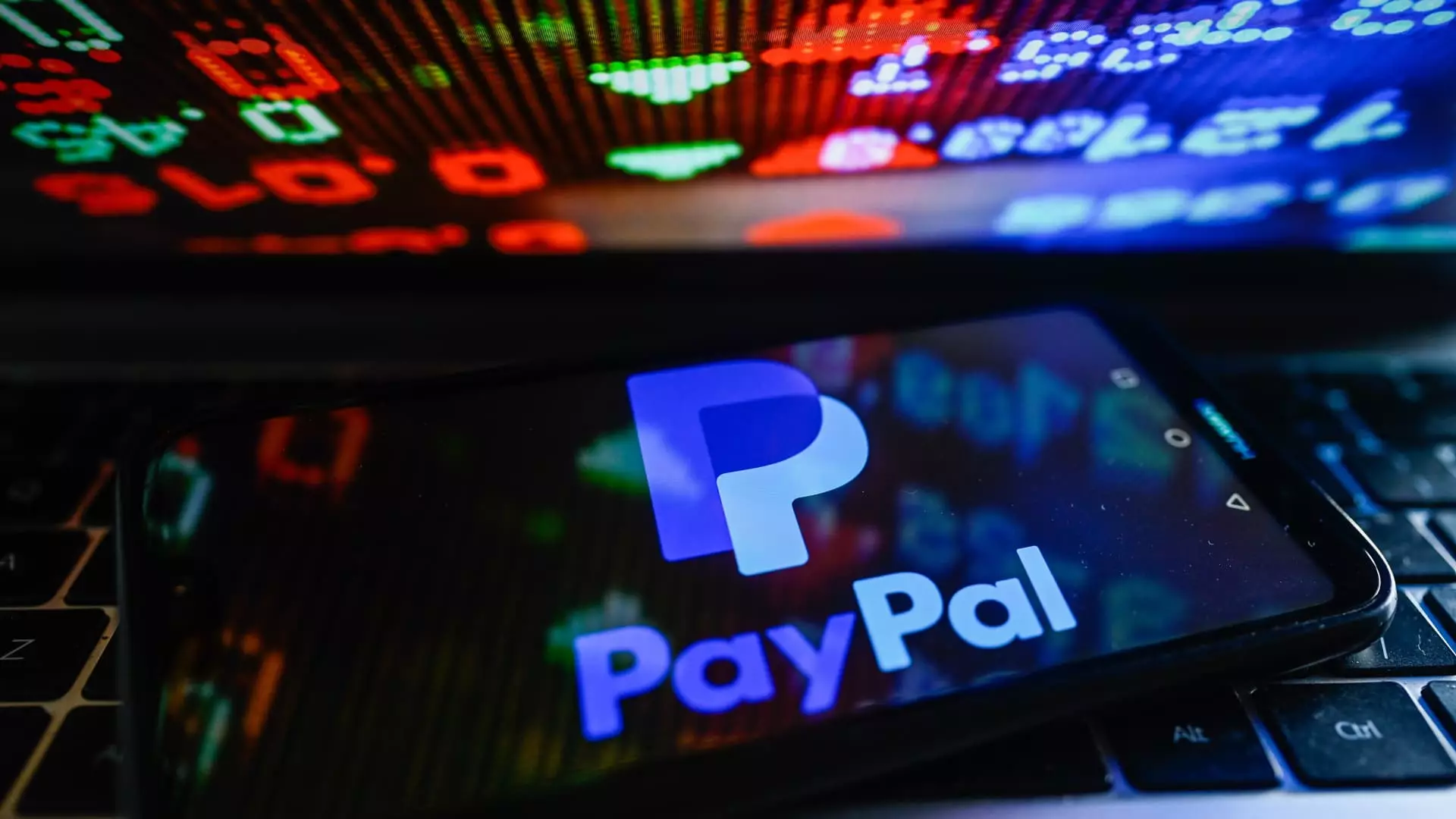As the cryptocurrency market evolves, the competition has become increasingly fierce, particularly among stablecoins. Coinbase’s recent decision to abolish fees on purchases of PayPal’s stablecoin, PayPal USD (PYUSD), reflects a strategic maneuver aimed at boosting adoption in a market that is predominantly dominated by the likes of Tether’s USDT and Circle’s USDC. The battle for supremacy among stablecoins is not just about technological superiority; it’s about capturing the hearts and wallets of consumers and institutions navigating the complex web of digital finance.
Despite its launch in 2023, PYUSD has struggled to make a significant impact, holding a mere 1% market share with a mere $730 million market cap. This flimsy holding is symptomatic of a broader issue within the crypto landscape where just two players—Tether and Circle—hold a staggering 94.8% combined market share. If Coinbase genuinely aims to foster a vibrant ecosystem for stablecoins, they must be willing to take bold, disruptive actions; removing purchasing fees could be a game changer, albeit a risky one.
Partnerships: The Name of the Game
In the rapidly evolving world of fintech, partnerships have proven to be essential for scalability and innovation. Coinbase has articulated a vision of not just increasing PYUSD’s adoption but rather embedding it into a larger framework of “stablecoin-based solutions.” This cooperative approach with PayPal, which boasts a colossal network comprised of over 430 million users, positions them favorably against competitors who may not have similar resources or reach.
The collaboration hints at ambitious horizons; from seamlessly executing transactions across borders to exploring decentralized finance (DeFi) solutions, Coinbase and PayPal are not just dabbling in incremental improvements—they are looking to reshape global financial architectures. Nevertheless, it’s essential to scrutinize how much value this partnership brings, especially when recent rivals like Circle have also introduced innovative payment solutions aimed directly at market leaders like PayPal itself. This raises the question: can these collaborations truly innovate or are they merely responses to mounting competitive tensions?
The Institutional Appeal of Stablecoins
Stablecoins have increasingly attracted institutional interest, particularly for their capacity to enable efficient, cost-effective transactions devoid of traditional banking hassles. The recent moves by PayPal and Coinbase suggest an acknowledgment of this potential market. Alex Chriss, PayPal’s president, touts a vision for PYUSD as a cornerstone for driving global “utility” in digital currencies, but it remains to be seen whether such lofty aspirations can be translated into tangible outcomes.
As institutions redirect their focus towards more efficient means of asset transfer and liquidity, the clock is ticking for PYUSD. The recent initiative announcement comes at a time when legislators are expected to solidify regulatory frameworks for stablecoins—a moment that may significantly alter the landscape. If Congress gets behind a piece of legislation that supports or hinders stablecoin operations, it could redeem or doom PYUSD’s future.
Coinbase’s Strategic Positioning
Coinbase has long sought to pivot away from its traditional reliance on trading revenues, which are notoriously volatile. With a keen interest in establishing itself as a pivotal player in the global economy powered by cryptocurrency, Coinbase’s ambitions are reflected in its happenings around PYUSD. The decision to facilitate easier redemption of PYUSD for U.S. dollars directly on the Coinbase platform mirrors existing capabilities for USDC—one of the more established stablecoins. This venture into seamless functionality could serve as a double-edged sword; if successful, it could cement Coinbase’s role as a leader in stablecoin transactions. However, if they fail to capture adequate interest, it could further exacerbate the stagnant state of PYUSD.
The call to integrate crypto payments across Coinbase’s full suite of products is not just aspirational; it reflects a macro shift within the industry and its approach to stablecoins. Partnering with other notable tech firms like Stripe speaks volumes about Coinbase’s understanding that stability in the crypto market comes from collaboration, but converting partnerships into widespread adoption remains a considerable challenge.
A Disruption in the Make
Removing fees may seem like a simple act on paper, but within the competitive cryptocurrency ecosystem, it’s an audacious move laden with implications. Coinbase is banking on the axiom that reducing barriers will amplify usage—an idealistic thought, but one that requires extensive consumer education and genuine commitment to value creation. Time will tell if Coinbase’s foresight can outpace the structural barriers that have long inhibited stablecoin adoption and if they can position PYUSD as a legitimate contender in a saturated market. In a world where digital finance is ever-evolving, such calculated gambles can either pave the way for future successes or serve as cautionary tales for unyielding ambition.

